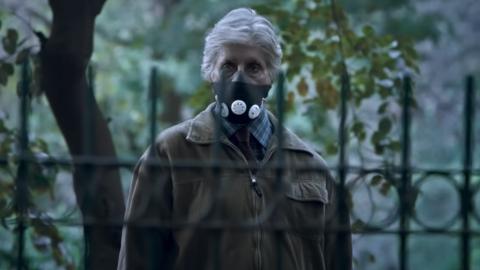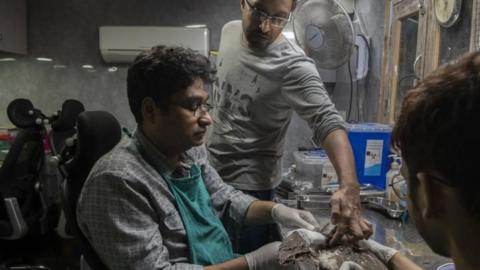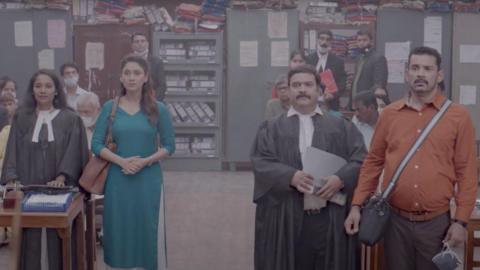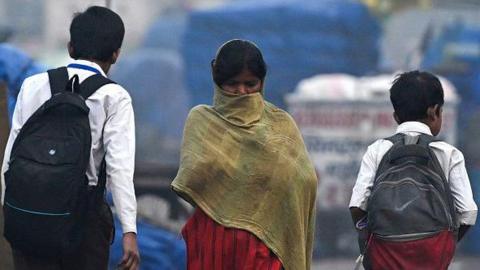In the 2016 Bollywood hit Pink, a scene introducing Amitabh Bachchan’s character shows the actor emerging from his home on a winter morning into Delhi’s smog-filled streets, wearing a mask.
The mask and Delhi's smoggy air feature in other scenes of the film but are of little relevance to its plot.
Yet, it is one of the rare examples of mainstream Indian films taking notice of the deadly air that makes many parts of India dangerous to live in every year.
The toxic air pollution and recurrent winter smog in Indian capital Delhi and other parts of northern India frequently makes headlines, becoming a matter of public concern, political debate and legal censure. But unlike disasters such as the devastating floods in Uttarakhand in 2013, Kerala in 2018 and Mumbai city in 2005 - each of which have inspired films - air pollution is largely missing from Indian pop culture.
Siddharth Singh, author of The Great Smog of India, a book on pollution, says that it is a "big failure" that air pollution is not a prevailing narrative in India's literature and filmmaking.
Much of the writing on pollution in India remains in the realm of academia and scientific expertise, he points out.
“When you say PM2.5 or NOx or SO2 (all pollutants), what are these words? They mean nothing to [ordinary] people."
In his 2016 book, The Great Derangement, author Amitav Ghosh, who has written extensively about climate change, observed that such stories were missing from contemporary fiction.
"People are weirdly normal about climate change,” he said in a 2022 interview.
The writer described being in India during a heatwave.
“What struck me was the fact that everything seemed to be normal and that was the most unsettling thing,” he said. “It is like we have already learnt to live with these changes.”
Ghosh described climate change as “a slow violence” which made it difficult to write about.
That certainly holds for pollution - it can have devastating health impacts over a long time, but does not lend itself to dramatic visuals.



